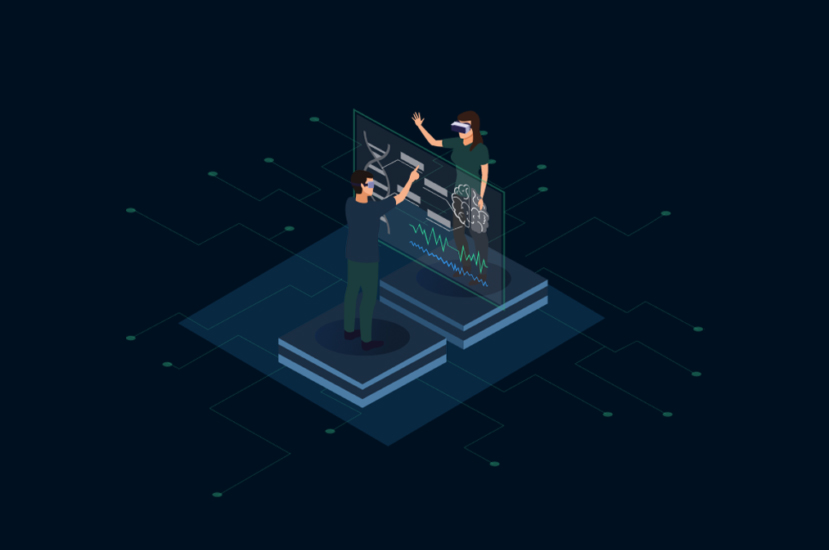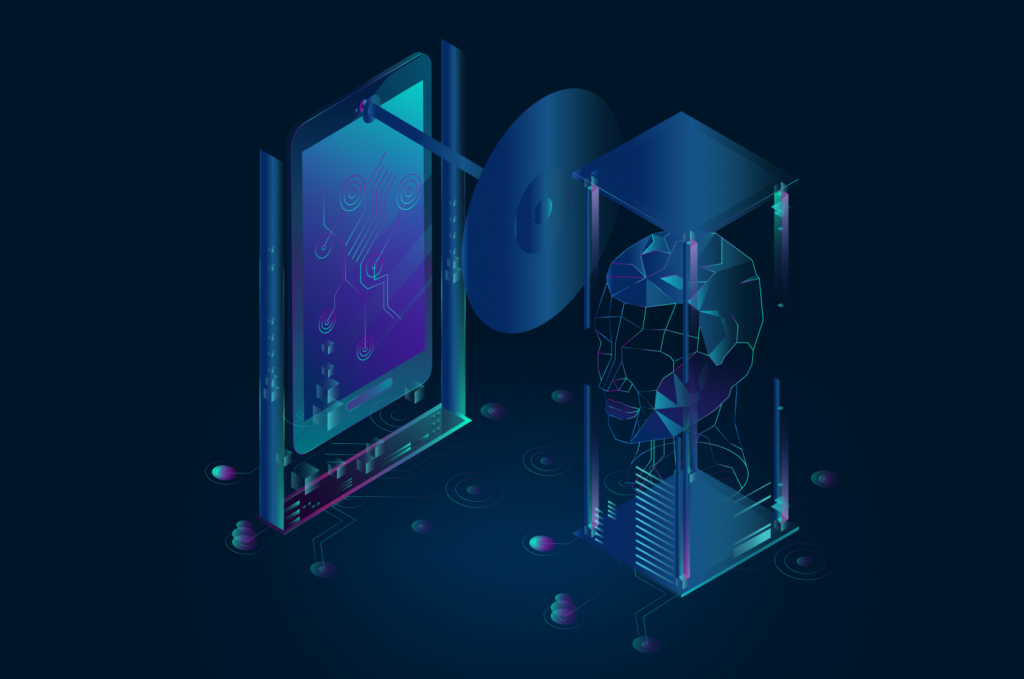The modern world offers us many technologies that can improve the quality of life and positively influence many aspects of it. Given the great digitalization, VR developments do not stand still.
Virtual reality is redefining what is possible in the healthcare industry. Advanced and more precise surgeries, simulations for illness treatments, and many other improvements become a new everyday reality thanks to VR solutions. Worth to note that the treatment process can be safer and with minimum inaccuracies. In fact, it saves lives – and life is the greatest value.
VR in healthcare: Use cases
Pre-training before real work
Since VR technologies are actively used in lots of areas, students also are able to learn more effectively and more carefully. They can use a 3D image of the patient’s anatomy. It allows you to learn different treatment methods and gives you real-world knowledge and practical skills. Upon entering a VR app’s simulated environment, students become a part of a training scenario. That expects them to complete predetermined steps in, for instance, performing a medical procedure or handling medical equipment. A separate analytical module continuously records the actions taken and assesses a medical professional’s performance based on set criteria.
Practicing in a safe, controllable space is a huge benefit for surgeons who want to enhance and rehearse their skills before operating on real patients. It allows simulation scenarios that are difficult, dangerous, or expensive to recreate in real life. Augmented reality combines the real world and computer-generated content. It is able to immerse users in the right situation. To do this, he superimposes graphics and animation in a real environment. We can simulate a wholly immersive experience and include real-world sensory aspects that improve depth perception. Especially important for clinical practitioners is to determine their success factors. They take advantage to devise a plan that has the highest chances of success and lower risk.
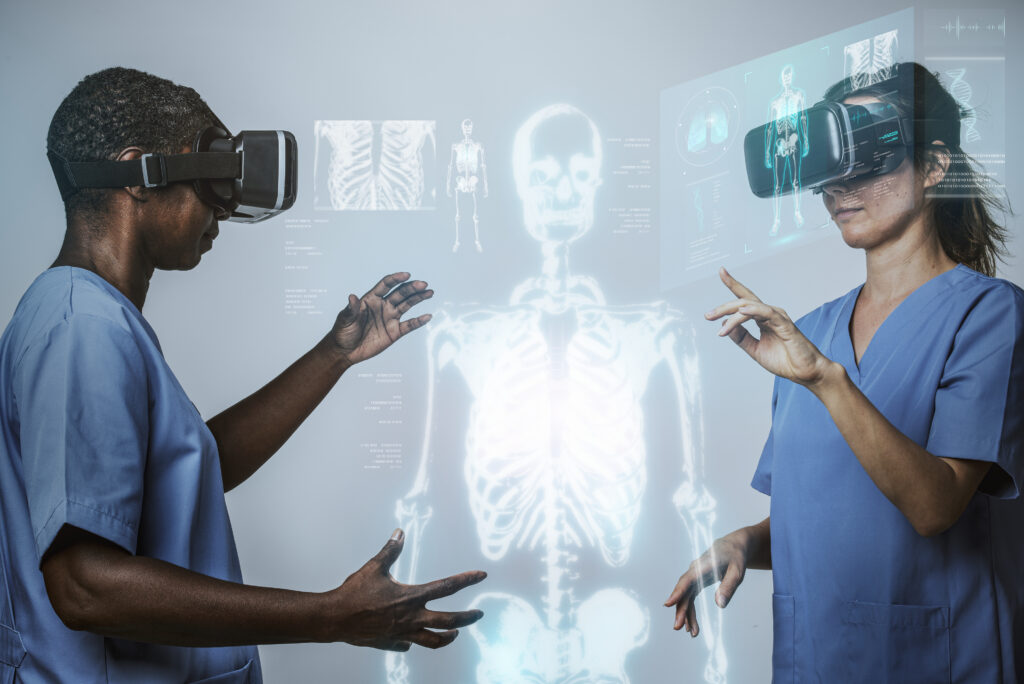
Preventing of disease
VR technologies can be used as a mirror of people’s behavior and show the consequences of this or that lifestyle. Knowing about the negative effects of some products or a sedentary lifestyle, people do not think about the real harm. But if they see and feel the future reality in the virtual world. It can change their attitude toward their health.
In 2017 was launched the preventive health program. It aims to reduce high blood pressure in the African-American community of South Los Angeles. As part of the program, participants watched a VR video that demonstrated the effects of sodium consumption on the body. The clip showed how eating foods high in sodium can directly lead to high blood pressure and heart disease.
“When you actually experience it in VR, seeing salt damage your heart and your body could motivate you to make long-term changes in your diet,” Dr. Brennan Spiegel says.
If virtual reality allows you to have a positive effect on people’s health in the long term, why not use it? Health prevention is always better than cure.
Impacting on Mental Illnesses
Trying to help patients VR technologies have a wide range of applications for mental diseases. Today therapists can engage patients in real-time simulations that emulate the fears they speak about, and adjust for intensity in the process. The value here is that the therapist and the patient can both be present in the fear-inducing situation at the same time. This advantage allows for immediate and effective confrontation and discussion of how to overcome that fear. New developments allow the implementation of distress management, mood enhancement, and stress relief. Also, this option is extremely helpful for patients with depression, because depressed patients often lack the motivation to step outside their familiar home environments. Virtual reality recreates any setting imaginable for the user and helps effortlessly overcome obstacles to a normal life.
VR in therapy gives more than improvement of cure. Patients and therapists see in the real-time vital information in greater levels of detail, helping them to visualize their conditions and show how therapies and treatments will work.
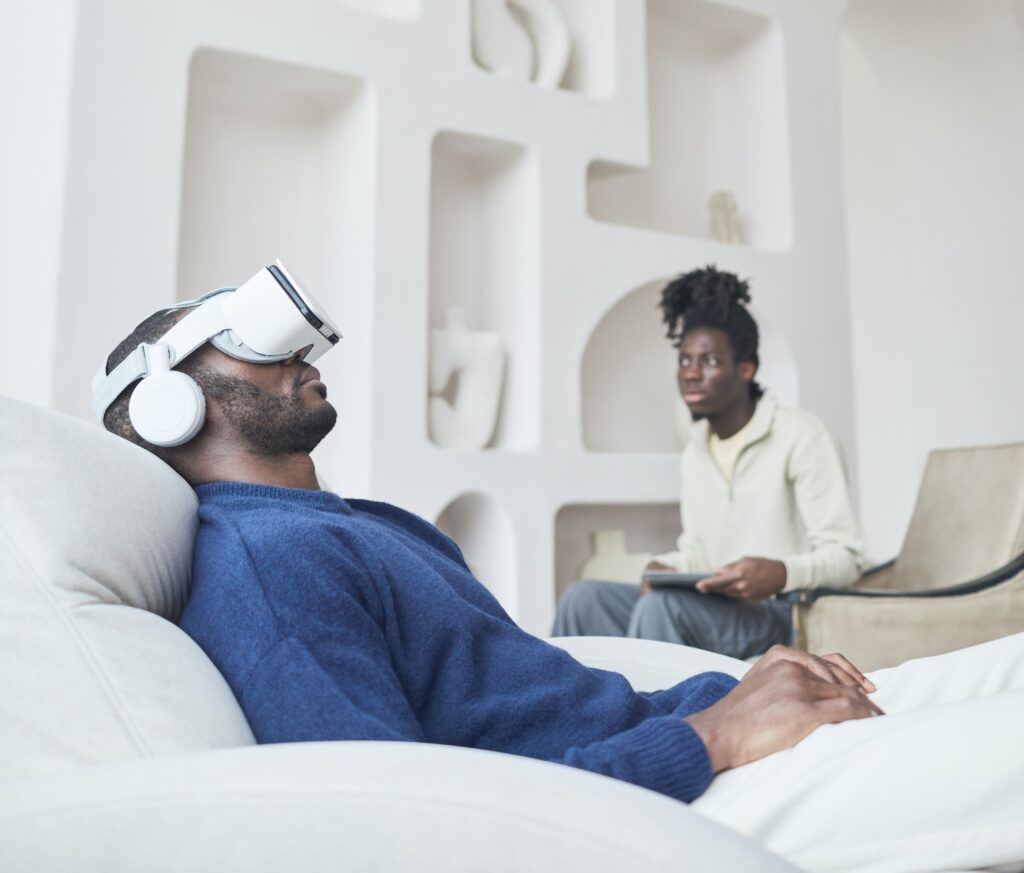
XR health project
XR Virtual Clinic offers drug-free treatment plans based on VR technology right now. How does it work? The biggest advantage is, of course, the ability to carry out treatment at home or anywhere without being tied to a place. A person registers on the website and consults with licensed therapists about his health, chooses a program of treatment, and waits for a VR headset that is sent to his home. After receiving the headset, the patient can start his personalized plan of care, consistently updated based on his progress. Video calls and in-app messaging with your dedicated XRHealth therapist are also a part of the chosen program.
XRHealth is a virtual clinic that provides medical and therapeutic treatments via telehealth. You can get a consultation from a specialist in the field of physiotherapy, psychology, memory and cognitive training, pain management, support groups, post-COVID rehab, stress\anxiety\depression management, and ADHD. Important features of XRHealth are the customization of exercises and keeping the optimal challenge level throughout the course of treatment.
In general, treatment in this way is effective and more comfortable than traditional, this says the positive reviews. We can say with confidence that this is only the beginning of telemedicine, but we can already see how much easier and more effective treatment is in this way. Therefore, it is worth developing further in this direction by offering patients even better and more comfortable care-plan options.
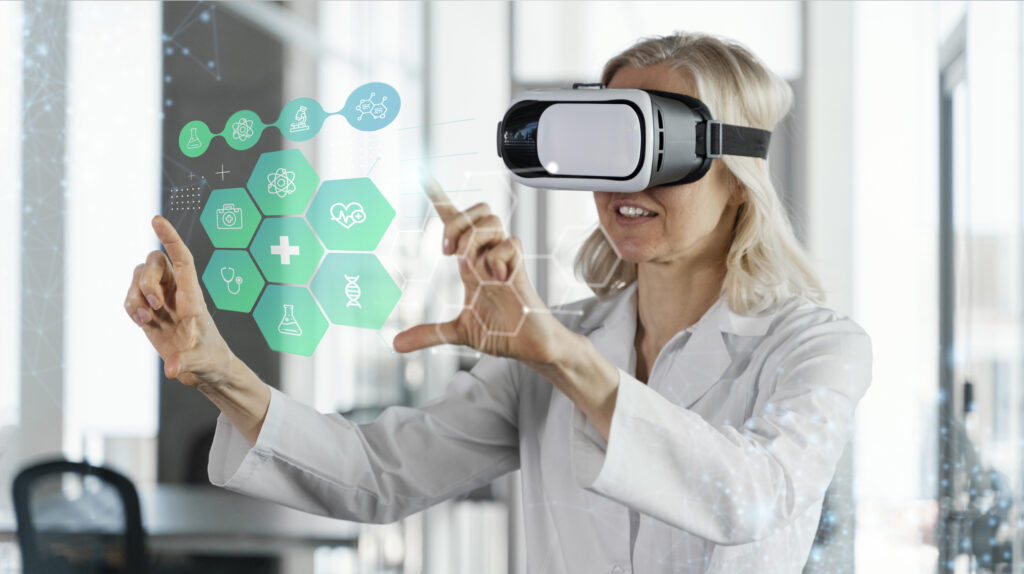
Data Analysis and VR
If before everyone thought that VR was related to games, today there is no doubt that we can use this technology in more wide fields. There are a lot of useful applications based on VR in the medical field but one of the most potentially important components for this is data analytics. The tremendous amount of data that is accumulated through user interaction is an amazingly incredible asset if it can be sorted into useful information. This idea is data visualization which includes making an immersive experience where the information models encompass you. It utilizes smart mapping, smart routines, machine learning, and natural language processing to find significant patterns and show them in the virtual environment, which would then be able to be customized by users. The primary explanation and reason for consolidating VR with big data are to improve the comprehensiveness of the immense amount of analytical data.
Visualization has lagged behind machine learning for quite a long time. But now we shouldn`t imagine a scenario in which there was an approach to visualize huge data sets that in a flash uncovered significant patterns and trends – it is an everyday reality. The general architecture always includes 3 main components: a VR application, a database, and a web administration panel that grants access to and control of both the app and the database. Going ahead with the impact points of the big data revolution, 3D visualizations in mixed reality are the correct tool at the ideal time to help decision-makers comprehend and gather insights from huge data sets.
Related Technologies for Successful VR Integration
With the apace scientific revolution, we have to adapt according to the needs of the contemporary world. Given the importance of the health sector, it is worth focusing a good part of the efforts on improving the processes of this particular field of activity. Using VR, we should always take into account the accompanying implementation of tools that help achieve the desired result, including AI and ML of course.
Deep learning technology is fundamental for the good functioning of VR because it can discover representations of data automatically by transforming the input information into multiple layers of abstractions in a deep neural network. Using this capability, we can create a high-quality 3D image that can be customized according to the needs of the application. By training with a large data set and an appropriate cost function, the multiple layers of weights in the deep neural network are iteratively updated, resulting in a complex mathematical model that can extract relevant features from the input data with high selectivity and invariance.
The next capability is to pile hefty data repositories on the computer that was problematic earlier. Making accommodations for knowledge data on the cloud AI and machine learning platform services give an opportunity to pass this obstacle. AI Platforms as a Service (PaaS) are used as an integral part of the effectiveness of VR, which requires an extremely wide range of data.
Of course, there are other technologies and services that help optimize the work of VR and make it as user-friendly as possible. However, it is deep learning and cloud storage capabilities that are the elements that you should pay attention to first.
VR Therapy: Amazinum Use Cases
The Amazinum team has already worked with Virtual Clinic. The client utilizes proprietary FDA and CE registered medical virtual and augmented reality, offering at the same time licensed clinicians consultations and providing a comprehensive therapeutic care solution for patients to receive treatment from the comfort of their homes. We used herewith directions like data analysis, big data, and data processing.
The main idea of the project was to analyze and process VR-user data that is generated during VR sessions under specific scenarios. The data contained the helmet’s location and rotation, the user’s hand’s location and its rotation, and eye movement that had a specific goal in the treatment plan. The system analyzes each scenario’s data and calculates results depending on what was tested during a specific scenario – the speed of reaction, the position of the head or neck, the precision of the movements or its quality, the accuracy of the user’s gaze, etc.
Received data helps doctors to analyze the patient’s condition and track his state in the future. This method of prediction is useful for care plans improving, tracking the progress, and adjusting the plan if it is necessary.
Conclusion
Without a doubt, VR is in the process of revolutionizing healthcare. All in order to ensure better results for patients and increase the efficiency of doctors. Not to mention allowing doctors to treat previously inaccessible patients and symptoms.This makes an invaluable contribution to the development of medicine and allows it to develop at a completely different pace than before.
Of course, the human brain processes information faster when it’s presented in multiple dimensions. It can allow much faster cognitive processing of the information than in a 2D representation. And now we can use this advantage to improve many processes. These include more effective research or unusual operations, treatment of mental illnesses, or light rehabilitation in the form of games. Enhanced flexibility and customization options allow to the creation of any required environment according to specific purposes with a control function. Another invaluable benefit of VR technologies used for treatment is that patients remain in safe conditions under the supervision of doctors. Thus, the therapy may be stopped whenever a patient feels any discomfort or their vitals start to change for the worse.
VR therapy offers more comfortable and efficient conditions of treatments and helps to follow the care plan without much effort. Research is still ongoing. So we can be sure that this is not the end, but only the beginning of a new era of effective medicine.
